Ladybug larva has often been confused as a harmful pest, especially when spotted on a milkweed plant. Sometimes the furry ladybug caterpillar gets squished, thinking that it is dangerous to garden plants.
Monarch eggs are distinctive from ladybug eggs. Monarch eggs are white in color and laid one at a time. Ladybug eggs, in contrast, are yellow and laid in clusters of up to 30 eggs at one time. Monarch larva eats milkweed plants. Ladybug larva eats caterpillars and aphids that eat the plants.
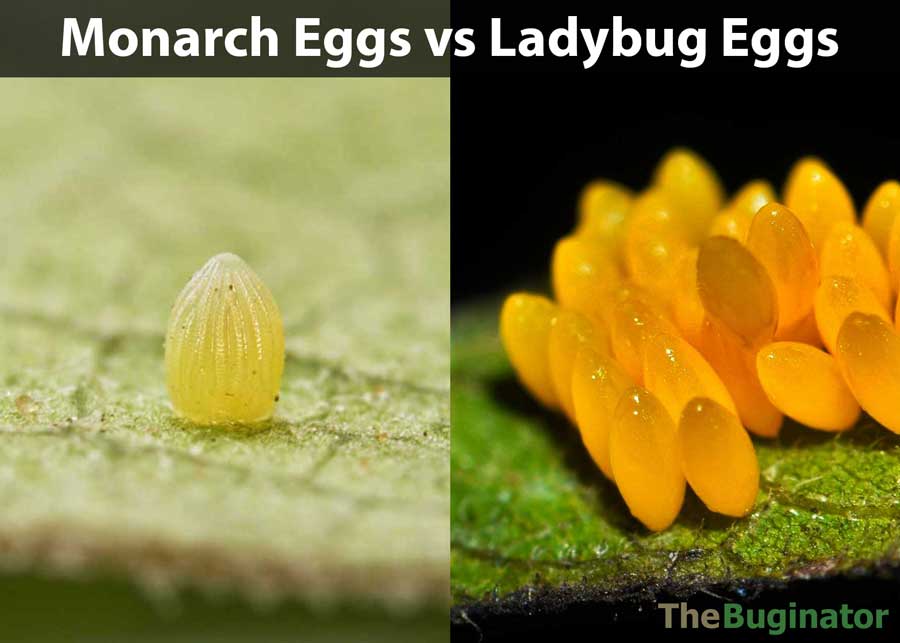
Table of Contents
Ladybug vs Monarch Eggs
Ladybug eggs are sometimes mistaken for monarch butterfly eggs. Here are specifics to tell these types of eggs apart.
How Many Eggs Do Monarchs Lay?
Monarch butterflies will lay from 100 to 300 eggs during their short life of about 14 days. Eggs will begin hatching in 3-4 days after being laid.
Monarch butterflies lay one egg at a time.
Learn more about the monarch butterfly’s lifecycle.
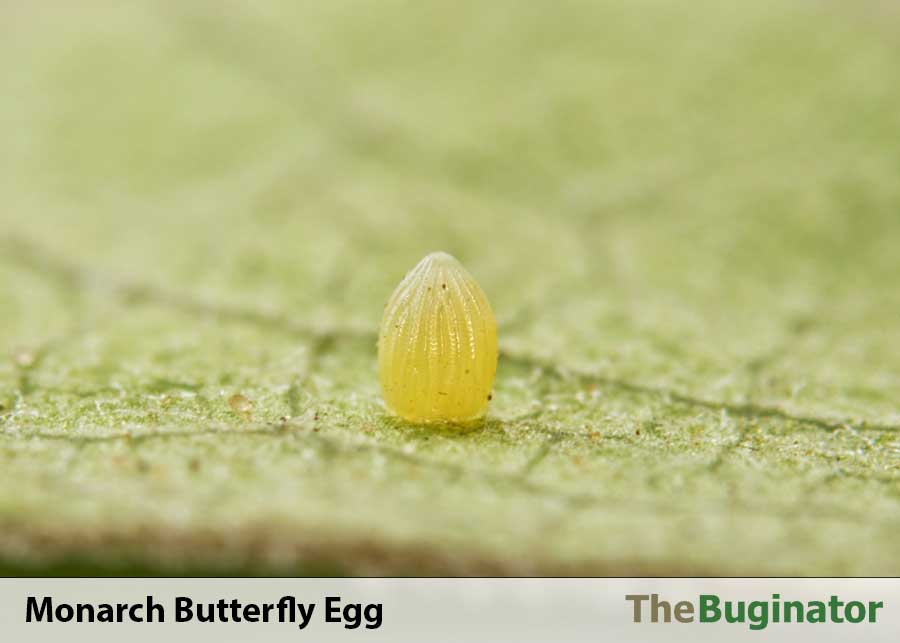
How Many Eggs Do Ladybugs Lay?
A ladybug oviposits 300 to 3000 eggs in her lifetime (depending on the species).
Ladybugs lay clusters of eggs, between 20-30 in each location.
Ladybugs live longer than most butterflies. Their average lifespan is from 3-6 weeks. Compare this to the lifespan of many butterflies at just two weeks.
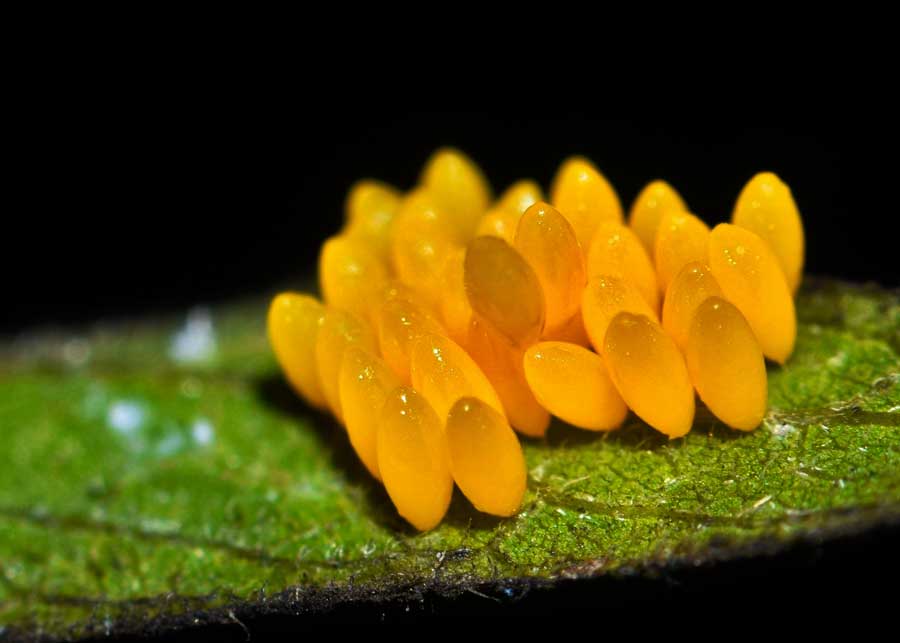
What Do Monarch Eggs Look Like?
Monarch eggs are small and round. They appear on the underside of milkweed leaves.
They are often white or off-white in color. Looking closely, you’ll see clear vertical ridges from the base to the tip.
As the egg matures, it will darken slightly. And it will hatch within 3-4 days.
What’s the difference between monarch and ladybug eggs?
- Monarch eggs differ from ladybug eggs in size and appearance.
- But even more notably, monarch eggs aren’t laid in clusters – but just one, solitary egg. In another part of the leaf, or on another leaf the monarch will lay their next egg.
In contrast, ladybugs lay clusters of eggs.
- If you find a single egg on a milkweed plant, it is not a ladybug egg.
- And if you find a cluster of eggs, you can be confident that it isn’t a monarch egg.
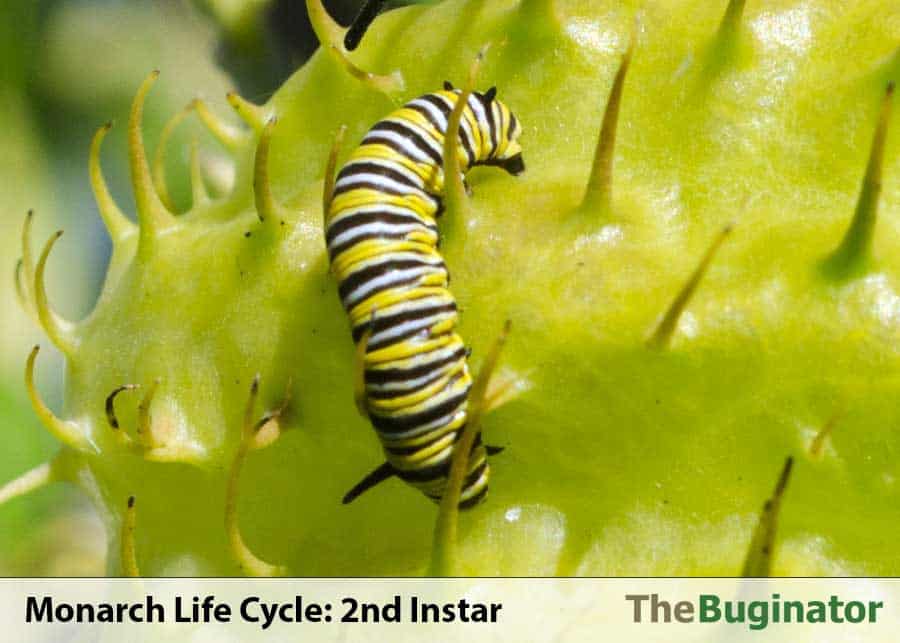
What Do Ladybug Eggs Look Like?
Ladybug eggs are laid in small clusters on the undersides of leaves.
Their eggs are shaped like a football and are yellow.
Female ladybugs often lay around 24 to 30 a day in these clusters. They are fairly easy to determine once you’ve seen them with your own eyes…you won’t likely forget it!
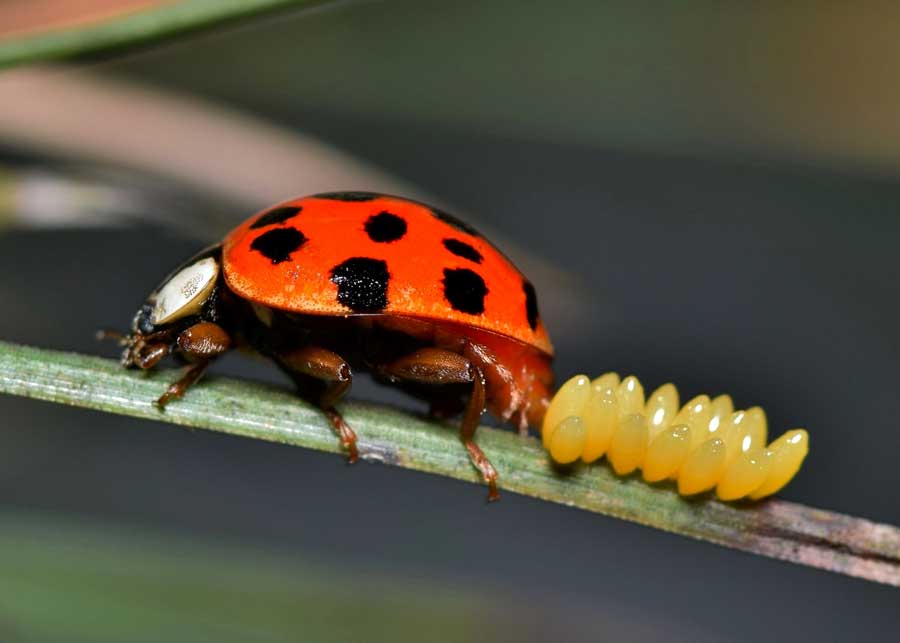
The eggs begin to darken when the little ones are ready to hatch.
After about 3 days, a strange-looking insect creature will hatch that looks NOTHING like the cute ladybug we know and love.
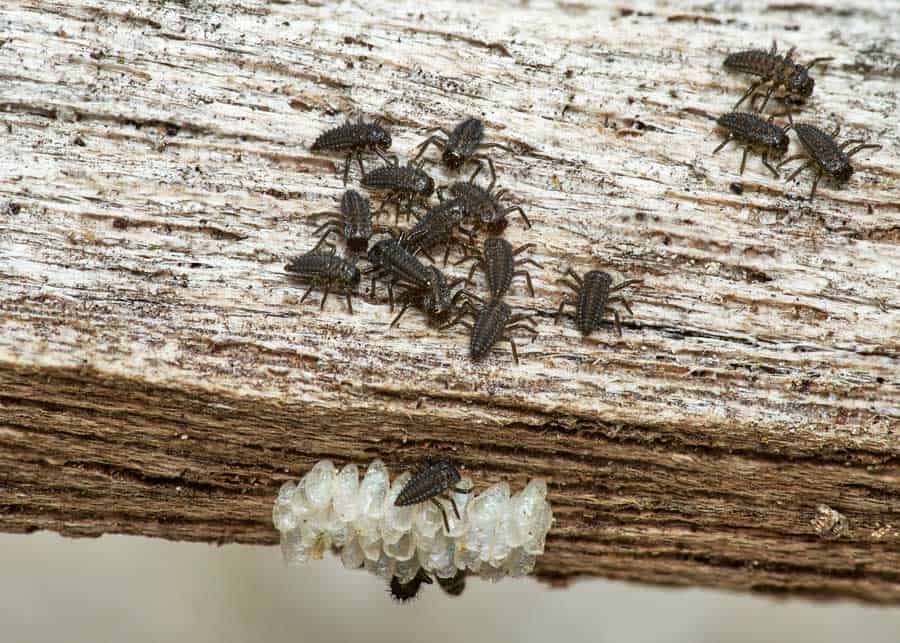
In fact, it isn’t uncommon for gardeners to squish the ladybug larva (caterpillar), not knowing what it is.
The ladybug larval stage lasts around three weeks (21 days or so).
And this is a great time for gardeners. Why? Because the ladybug larvae are insectivores and will consume many of the undesirable garden bugs.
Ladybugs are considered a ‘beneficial insect’ so they are good insects to encourage.
In fact, during the larval stage, these ladybird babies can eat upwards of 300 Aphids! And as adults, they can consume about 50 aphids every day, according to The Bug Lady.
If you do see these strange-looking critters, they are worth keeping around.
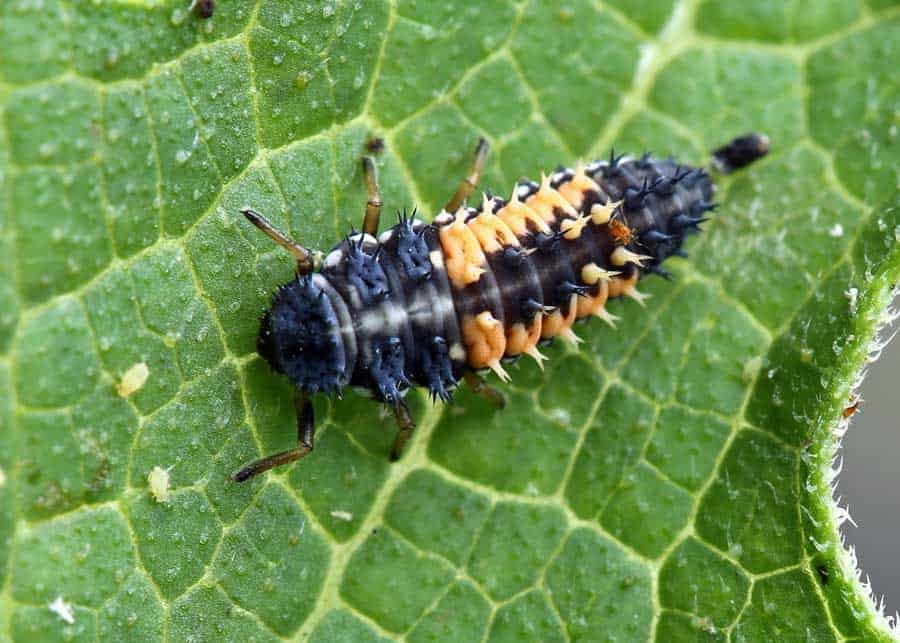
On the other hand, if you are raising butterflies, you’ll want to keep ladybug eggs and larvae away from your butterfly eggs and larva. The ladybird larvae will quickly eat the butterfly eggs/larvae. And as a side note, they’ve been known to eat each other.
Once the larval stage ends, it’s time for the ladybird caterpillar to pupate. The pupal stage is around a week. The ladybug life-cycle is complete once the adult ecloses, shedding its pupal case, and is free to go out and eat insects!
Are Ladybug Larvae Harmful?
Ladybug larvae aren’t harmful to humans, in any stage of development.
And because of the volume of aphids and caterpillars they consume, they are great for the garden.
What Do Ladybug Larvae Eat?
Ladybug larva will eat insects, such as aphids, off the milkweeds.
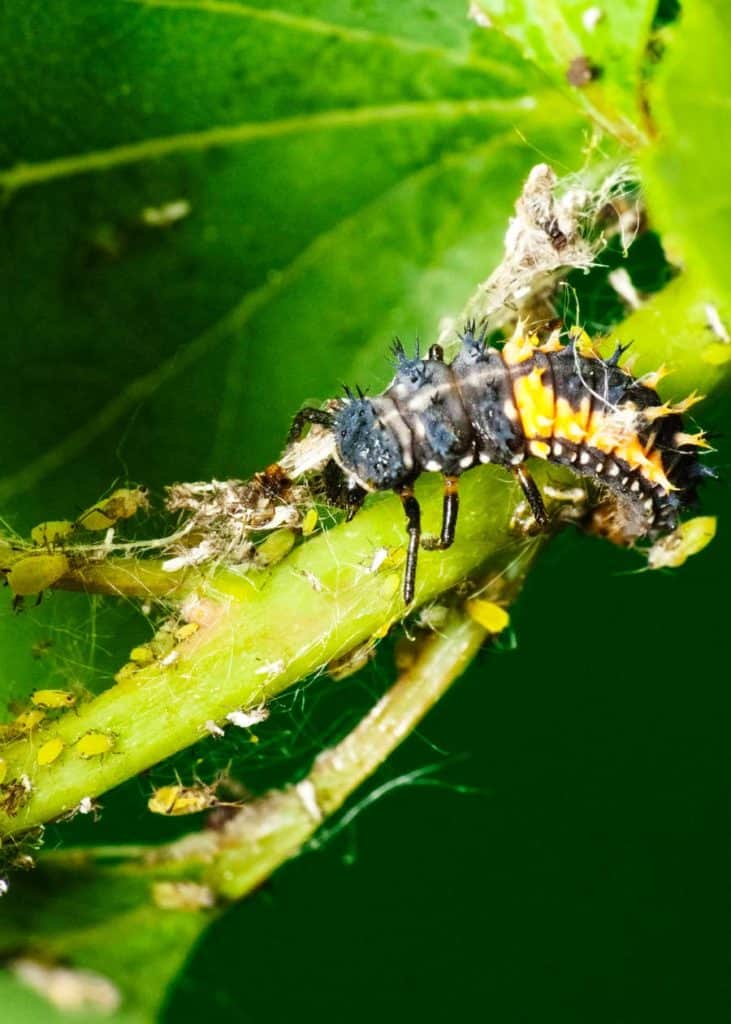
Do Ladybugs eat Caterpillars?
Ladybugs (both adult and larva) eat caterpillars – including the monarch larvae (especially in the first few instars).
And while ladybugs (aka ladybirds) will eat caterpillars, they often focus their attention on aphids.
Do you remember this old English poem?
Ladybird, ladybird, fly away home—
Your house is on fire and your children all gone!
All except one and that’s little Ann,
and she’s crept under the warming pan.
There are about 5,000 ladybug species. And ladybugs undergo complete metamorphosis, like the butterfly.
They are considered beneficial bugs during both their larval and adult stages.
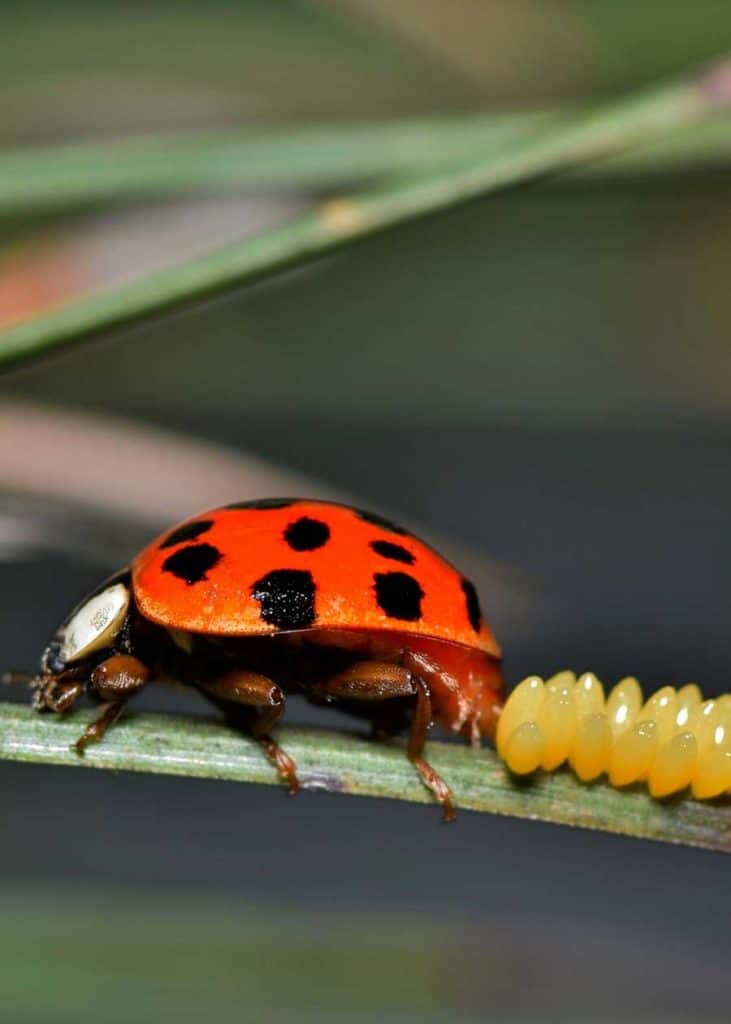
This guide is part of our Monarch Butterfly Guide. Learn more about raising monarch caterpillars.
Your Turn
Have you found monarch eggs in your garden? What about ladybug eggs? I would love to hear what type of eggs and larvae you’re discovering in your backyard.
- About the Author
- Latest Posts
Dena Haines is a founder and writer at My Monarch Guide. And is working to make it the best resource for raising and enjoying monarch butterflies.
She also blogs about travel at Storyteller.Travel and photography at Storyteller Tech. Dena is a partner at Storyteller Media, a publishing company she runs with her husband, Bryan.
